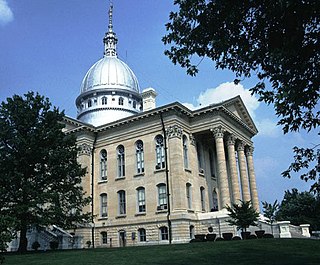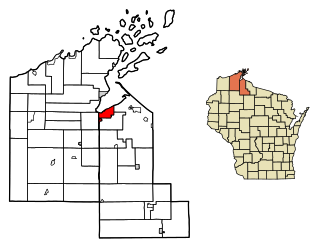
Williamson County is a county in Southern Illinois. At the 2020 census, it had a population of 67,153. The largest city and county seat is Marion.

Macoupin County is located in the U.S. state of Illinois. According to the 2020 census, it had a population of 44,967. The county seat is Carlinville.

Christopher is a city in Franklin County, Illinois, United States. The population was 2,697 at the time of the 2020 census.

Brighton is a village located mostly in Macoupin County and partially in Jersey County, Illinois, United States. As of the 2020 census, the village had a population of 2,221. The village's current mayor is Matthew P. Kasten.

Benld is a city in Macoupin County, Illinois, United States. The population was 1,464 at the 2020 census, down from 1,556 in 2010. It is located in the Metro-East portion of the Greater St. Louis metropolitan area.

Bunker Hill is a city in Macoupin County, Illinois, United States. The population was 1,630 at the 2020 census, down from 1,774 in 2010.

Carlinville is a city and the county seat of Macoupin County, Illinois, United States. As of the 2020 census, the population was 5,710.

East Gillespie is a village in Macoupin County, Illinois, United States. As of the 2020 census, the village had a population of 269.

Gillespie is a city in Macoupin County, Illinois, United States, and part of the Metro East region of the St. Louis metropolitan area. The population was 3,168 at the 2020 census.

Girard is a city in Macoupin County, Illinois, United States. The population was 1,785 at the 2020 census, down from 2,103 in 2010.

Medora is a village in Macoupin County, Illinois, United States. The population was 379 at the 2020 census, down from 419 in 2010.

Mount Olive is a city in Macoupin County, Illinois, United States. The population was 2,015 at the 2020 census. The city is part of the Metro East region within the St. Louis metropolitan area.

Palmyra is a village in Macoupin County, Illinois, United States. The population was 605 at the 2020 census, down from 698 in 2010.

Sawyerville is a village in Macoupin County, Illinois, United States. As of the 2020 census the population was 268.

Shipman is a village in Macoupin County, Illinois, United States. The population was 511 at the 2020 census, down from 624 in 2010.

Virden is a city in Macoupin and Sangamon counties in the U.S. state of Illinois. The population was 3,231 at the 2020 census.

Collinsville is a city located mainly in Madison County and partially in St. Clair County, Illinois, United States. As of the 2020 census, the city had a population of 24,366. Collinsville is approximately 14 miles (23 km) east of St. Louis, Missouri, and is part of that city's Metro East area.

Johnston City is a city in Williamson County, Illinois, United States. The population was 3,348 at the 2020 census. This was a center of coal mining in the early 20th century, having a peak of population in the 1920s. The mining jobs attracted many immigrants from Europe.

Ashland is a city in Ashland and Bayfield counties in the U.S. state of Wisconsin. It is the county seat of Ashland County. The city is a port on Lake Superior, near the head of Chequamegon Bay. The population was 7,908 at the 2020 census, all of whom resided in the Ashland County portion of the city. The unpopulated Bayfield County portion is in the city's southwest, bordered by the easternmost part of the Town of Eileen.

Robert Paul Prager was a German immigrant who was lynched in the United States during World War I as a result of anti-German sentiment. He had worked as a baker in southern Illinois and then as a laborer in a coal mine, settling in Collinsville, a center of mining. At a time of rising anti-German sentiment, he was rejected for membership in the Maryville, Illinois local of the United Mine Workers of America. Afterward he angered area mine workers by posting copies of his letter around town that complained of his rejection and criticized the local president.





















